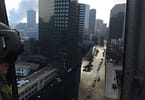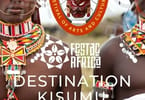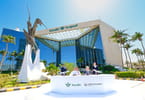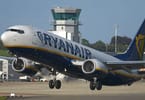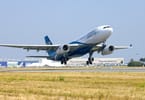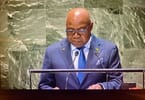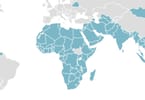Unlike some members of the conservation community in Kenya, the Chairman of the Board of Trustees of the Kenya Wildlife Service (KWS), Dr. Richard Leakey, yesterday showed some remarkable maturity, when he jointly addressed the public with his colleagues of the Kenya National Land Commission and the Kenya Railways in regards to the planned construction of the track at the edge of the Nairobi National Park of the planned Standard Gauge Railway.
The matter under consideration had been used by certain conservationists to character assassinate the owner of the African Heritage House Mr. Alan Donovan, leveling a number of unfounded allegations against him, after the house plus museum was earlier this year declared a national monument.
Kenya’s conservation godfather, Dr. Richard Leakey, however, clearly was of a different opinion when he, together with his two colleagues, issued a statement today in which the decision to allow the railway through the park was explained:
Start quote:
The Kenya Wildlife Service (KWS) was approached some months back in early 2015 to grant access through the Nairobi National Park by the Standard Gauge Railway (SGR), which is under construction. A number of meetings have been held between KWS, the Kenya Railways KR) and the National Land Commission (NLC) in an attempt to find a pragmatic solution which will, amongst other things, reflect the fundamental principles on the management of state land that is protected by both the Constitution of Kenya and various laws, especially the Wildlife Conservation and Management Act, 2013. Of particular concern to the Boards of KWS and KR, and the NLC was that:
• The original boundaries of the Nairobi National Park (NNP) will not be varied and the total acreage of NNP will not be reduced.
• Strict controls will be put in place to maximize security of both wildlife and the environment.
• Appropriate measures and fencing along the track will protect animals from fast moving trains.
• Animals and visitors will have access to the eastern side of the SGR track without hindrance by passing under several section of the track that will be elevated on three (3) bridges of almost a kilometre in total length and an underpass height of 6 metres minimum but generally a height of over 20 metres.
• KWS is negotiating to obtain funds from KR to offset the intrusion of the easement and if these funds are paid they will be invested in a transparent Wildlife Endowment Fund where only interest earned could be spent.
It is the view of the boards of Kenya Wildlife Service, National Land Commission and Kenya Railways that allowing the SGR through and in places over Nairobi National Park is a compromise situation that reflects the national interest in the larger sense, and leaves the boundaries of the Park intact and unaltered.
• No boundary changes or loss of acreage occurs.
• Minimal disturbance to the environment with wildlife having access to both sides of the easement.
• There is a huge financial saving on the SGR project which reflects a saving to the tax payers. The substantial savings from this decision will be invested in an endowment fund for wildlife conservation.
• It is our hope that by reaching this compromise, the KWS policy on park land never being excised in future will be reinforced.
• KWS would like to propose to planners and government that all future major transport corridors (rail, road and pipelines) should be put above ground on bridges to allow for wildlife migration and movement, where such corridors pass through any National Park estate.
Signed by the three chairmen
The response from the public at large and a wide cross-section of the conservation community in Kenya was positive as many welcomed the development and statement, which hopefully puts another acrimonious Don Qixote-like fight with the government to rest before it starts in earnest.
A number of recommendations had been received on this subject in the past, vis-a-vis concessions to be extracted from government in regards to funding, land additions to Nairobi National Park, and commitments to keep the remaining migration routes open. No doubt Dr. Leakey will use his influence and standing with the government to negotiate the best possible outcome after demonstrating his sense of real politics and national interest in this particular case imposing himself and by his action superseding the interests of a small but admittedly vocal group not ready for compromise.
WHAT TO TAKE AWAY FROM THIS ARTICLE:
- It is the view of the boards of Kenya Wildlife Service, National Land Commission and Kenya Railways that allowing the SGR through and in places over Nairobi National Park is a compromise situation that reflects the national interest in the larger sense, and leaves the boundaries of the Park intact and unaltered.
- A number of meetings have been held between KWS, the Kenya Railways KR) and the National Land Commission (NLC) in an attempt to find a pragmatic solution which will, amongst other things, reflect the fundamental principles on the management of state land that is protected by both the Constitution of Kenya and various laws, especially the Wildlife Conservation and Management Act, 2013.
- Richard Leakey, yesterday showed some remarkable maturity, when he jointly addressed the public with his colleagues of the Kenya National Land Commission and the Kenya Railways in regards to the planned construction of the track at the edge of the Nairobi National Park of the planned Standard Gauge Railway.



